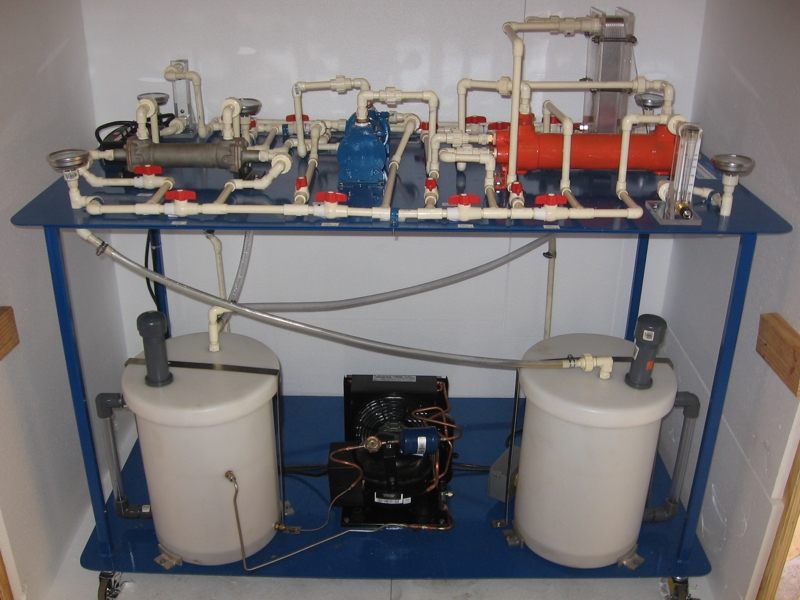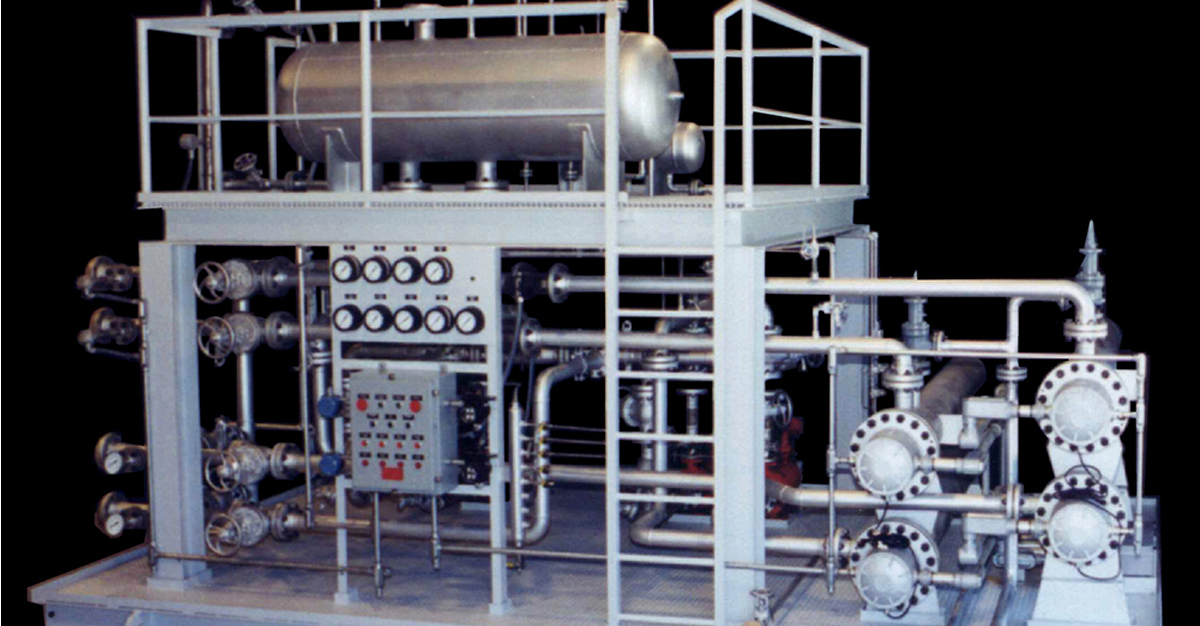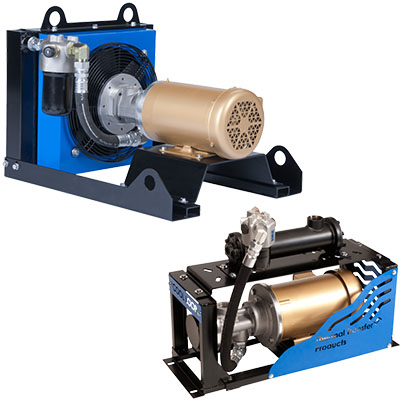Why Are DVS Heat Transfer Systems Ideal for Aerospace Thermal Solutions?
Wiki Article
A Comprehensive Overview to Selecting the Right Heat Transfer Systems for Your Demands
Picking the appropriate Heat transfer system is necessary for operational performance. Different systems accommodate various needs, affected by aspects such as temperature level variety and fluid type. Understanding the concepts behind Heat transfer, such as convection, transmission, and radiation, is important. In addition, evaluating power sources and upkeep techniques can influence long-lasting efficiency. A closer assessment of these considerations reveals exactly how to tailor a system to certain demands. What should one prioritize in this facility decision-making process?Comprehending Heat Transfer: Trick Concepts and Principles
Heat transfer may seem like an uncomplicated idea, it incorporates a range of principles that are fundamental for effective system layout - DVS Heat Transfer Systems. Comprehending these concepts is crucial for designers and engineers who intend to optimize thermal efficiency in various applications. Transmission, as an example, involves the transfer of Heat via strong products, while convection describes the movement of Heat within liquids. Radiation, an additional crucial concept, describes how Heat can be moved with electro-magnetic waves. Each of these mechanisms plays an essential role in figuring out how power relocates within a system. By extensively comprehending these principles, specialists can make enlightened choices, making certain that Heat transfer systems run effectively and satisfy the particular needs of their applications
Kinds Of Heat Transfer Systems: A Summary
Comprehending the concepts of Heat transfer prepares for discovering the different kinds of Heat transfer systems offered. Heat transfer systems can be classified mostly into three kinds: radiation, transmission, and convection. Transmission includes Heat transfer through strong products, depending on direct call between particles. Convection, on the various other hand, happens in liquids (gases and fluids) where the movement of the liquid itself promotes Heat transfer. Radiation includes the transfer of Heat via electro-magnetic waves and does not require a tool, enabling it to happen in a vacuum. Each sort of system has unique qualities and applications, making it essential for people and companies to very carefully evaluate their details needs when picking one of the most appropriate Heat transfer remedy.Applications of Heat Transfer Systems in Various Industries
Heat transfer systems play a vital duty across numerous industries, influencing efficiency and item high quality. In commercial production procedures, they promote accurate temperature level control, while in food and beverage processing, they guarantee safety and security and preservation. Furthermore, heating and cooling and environment control systems rely greatly on reliable Heat transfer to keep comfy environments.Industrial Production Processes

Numerous industrial manufacturing processes count greatly on reliable Heat transfer systems to optimize productivity and improve product top quality. In fields such as metalworking, Heat exchangers play a vital duty in maintaining suitable temperature levels during welding, casting, and building. These systems guarantee consistent Heat distribution, which is important for attaining desired material residential or commercial properties. In the chemical production market, Heat transfer systems promote specific temperature control throughout responses, influencing yield and safety. Furthermore, in textile manufacturing, reliable Heat administration is essential for coloring and finishing procedures, influencing shade uniformity and fabric high quality. By choosing suitable Heat transfer technologies, manufacturers can improve power efficiency and decrease operational expenses, ultimately bring about an extra competitive and sustainable production atmosphere.
Food and Beverage Processing
Efficient Heat transfer systems are equally essential in the food and drink handling industry, where keeping optimal temperature levels is vital for food safety and top quality. These systems play a vital function in processes such as pasteurization, sanitation, and cooking, making sure that items are secure for usage and maintain their nutritional worth. Heat exchangers, as an example, efficiently move Heat in between liquids, enhancing power usage while decreasing temperature level changes. Furthermore, refrigeration systems are basic for protecting perishable items and expanding shelf life. The selection of Heat transfer innovation straight impacts functional effectiveness and item stability, making it crucial for food and drink makers to select the suitable systems tailored to their details processing demands. This cautious choice ultimately adds to consumer contentment and food safety and security.
HVAC and Climate Control
While many sectors depend on Heat transfer systems for performance, A/C (Heating, Air Flow, and A/c) plays a vital role in maintaining interior climate control across various settings. These systems make use of Heat transfer concepts to manage air, moisture, and temperature level high quality, making sure convenience and security in property, business, and industrial environments. Properly made a/c systems boost energy performance, lower functional prices, and minimize environmental influence. In industrial buildings, additional info for example, reliable climate control adds to worker performance and consumer complete satisfaction. In commercial applications, a/c systems aid preserve perfect conditions for devices operation and item conservation. Picking the ideal Heat transfer system is essential for meeting certain environment control requirements and achieving overall system efficiency.Reviewing Energy Resources for Heat Transfer Solutions
In evaluating energy sources for Heat transfer systems, a contrast of renewable resource choices and nonrenewable fuel source considerations is vital. Renewable sources, such as solar and wind, deal lasting choices that can decrease environmental effect. Conversely, nonrenewable fuel sources remain widespread because of their established infrastructure and energy density, prompting a careful evaluation of both alternatives.Renewable Power Options

Nonrenewable Fuel Source Considerations
Examining nonrenewable fuel source factors to consider is essential for the effectiveness and sustainability of Heat transfer systems. Fossil fuels, such as natural gas, oil, and coal, are standard energy resources that give considerable Heat output, making them prominent choices for domestic and commercial applications. Nonetheless, their environmental effect, consisting of greenhouse gas exhausts and resource deficiency, elevates worries. When choosing a heat transfer system, it is crucial to examine the accessibility, cost, and regulatory variables related to this these fuels. In addition, the performance of nonrenewable fuel source systems must be thought about, as higher performance can alleviate some environmental drawbacks. Ultimately, a well balanced strategy weighing efficiency and sustainability can assist decision-makers towards the most appropriate Heat transfer remedy for their particular requirements.Factors to Take Into Consideration When Picking a Warm Transfer System
Choosing an ideal Heat transfer system requires careful consideration of numerous factors that can considerably influence effectiveness and performance. One essential element is the operating temperature array, which dictates the materials and style suitable for the application. In addition, the sort of liquid made use of in the system-- whether gas or liquid-- affects Heat transfer effectiveness and compatibility. The system's dimension and ability have to line up with the particular demands of the operation to prevent inefficiencies. Energy source schedule is additionally essential, affecting operating prices and sustainability. Furthermore, the installment environment, including area restrictions and ease of access for upkeep, plays a substantial role in system option. Regulative compliance and safety requirements have to be taken into consideration to ensure the system satisfies all legal needs.Upkeep and Effectiveness Optimization for Heat Transfer Solutions
Preserving Heat transfer systems is crucial for making certain maximum effectiveness and longevity. Normal maintenance activities, such as cleansing Heat exchangers and examining insulation, assistance prevent performance losses as a result of fouling and thermal bridging. Additionally, monitoring system criteria, consisting of stress and temperature, permits early detection of abnormalities, minimizing downtime and costly repairs. Implementing a preventive upkeep schedule can maximize performance and extend the life expectancy why not look here of elements. Updating to innovative control systems can enhance operational performance by changing to differing tons and problems. By focusing on maintenance and effectiveness optimization, drivers can attain lowered power intake, lower functional expenses, and boosted total system reliability, eventually bring about better resource utilization and an extra sustainable operation.Future Patterns in Heat Transfer Technologies
As markets significantly prioritize sustainability and energy efficiency, future patterns in Heat transfer technologies are readied to undergo substantial improvements. Innovations such as innovative products, including carbon nanotubes and nanofluids, promise improved thermal conductivity and efficiency. Additionally, the combination of renewable energy resources right into Heat transfer systems is obtaining energy, promoting environmentally friendly options. Smart technologies, including IoT sensors, are anticipated to change tracking and control, enabling real-time data analysis for maximized performance. The growth of modular and compact systems will help with easier setup and maintenance, providing to varied applications. These developments show a shift in the direction of even more sustainable, reliable, and versatile Heat transfer solutions, aligning with global energy objectives and environmental standards.
Regularly Asked Inquiries
What Are the Ecological Effects of Heat Transfer Equipments?
The ecological impacts of Heat transfer systems can include greenhouse gas emissions, energy consumption, and prospective thermal air pollution. In addition, improper disposal of products and ineffectiveness can contribute to source depletion and ecosystem interruption.How Do I Calculate the Cost-Effectiveness of a Warm Transfer System?
To determine the cost-effectiveness of a warmth transfer system, one must examine first expenses, functional expenses, upkeep needs, and power performance, contrasting these variables versus the anticipated lifespan and performance of the system.Can Heat Transfer Equipment Be Utilized in Residential Setups?
Heat transfer systems can undoubtedly be utilized in household setups. They provide efficient home heating and cooling down options, making homes a lot more comfy while possibly reducing energy prices. Their flexibility permits different applications in residential settings.What Security Rules Apply to Heat Transfer Systems?
Safety laws for Heat transfer systems usually consist of standards on procedure, installation, and upkeep. Compliance with neighborhood building ordinance, producer specs, and sector criteria is important to guarantee safe and reliable system performance in different applications.How Do Different Products Affect Heat Transfer Performance?

Transmission, for instance, entails the transfer of Heat through solid materials, while convection refers to the movement of Heat within fluids. Comprehending the principles of Heat transfer lays the groundwork for exploring the different types of Heat transfer systems readily available. Heat exchangers, for circumstances, efficiently move Heat between fluids, optimizing energy use while lessening temperature fluctuations. In assessing energy sources for Heat transfer systems, a contrast of sustainable energy options and fossil gas considerations is vital. Metals, such as copper and aluminum, conduct Heat efficiently, whereas insulators like rubber and glass reduce down Heat circulation.
Report this wiki page